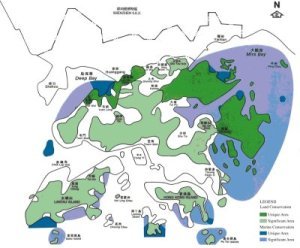| Studies of environmental baseline information allow us to have a better understanding on the existing environment which could in turn facilitate the SEA processes. A good and professional baseline study would help identify environmental issues and opportunities and facilitate a proper screening and scoping exercise. The baseline conditions should be established using appropriate strategic parameters to such a level of details that further details would not alter the conclusions on the environmental acceptability and preference of the strategic options under consideration. The information should also be able to provide a foundation for assessing the nature and extent of potential implications which could arise from different options being considered. However, collecting baseline data is a costly and time-consuming exercise. If existing baseline data are available, and if they are still valid, maximizing the use of existing data is recommended.
http://www.epd.gov.hk/epd/english/environmentinhk/eia_planning/sea/ebook1_7.html
TDSR’s environmental baseline study identified a range of environmental constraints. Among them, environmentally sensitive areas within the territory were identified and their conservation values were recognized, leading to the protection of these areas free from developments (Figure 9).
(click to enlarge)
 Figure 9 - The baseline study of TDSR helped identify environmentally sensitive areas, protecting them free from developments
Figure 9 - The baseline study of TDSR helped identify environmentally sensitive areas, protecting them free from developments
http://www.epd.gov.hk/epd/english/environmentinhk/eia_planning/sea/waste_disposal_sites.html
The results of the baseline study were presented in a form of constraint maps on which “Areas of Absolute Exclusion”, environmental, ecological and conservation areas across the territory were identified. With other environmental considerations, areas finally identified for exclusion of landfill developments included existing and proposed Country Parks, Marine Parks, Marine Reserves, Sites of Special Scientific Interest; Ramsar sites, water gathering grounds, etc.
|

